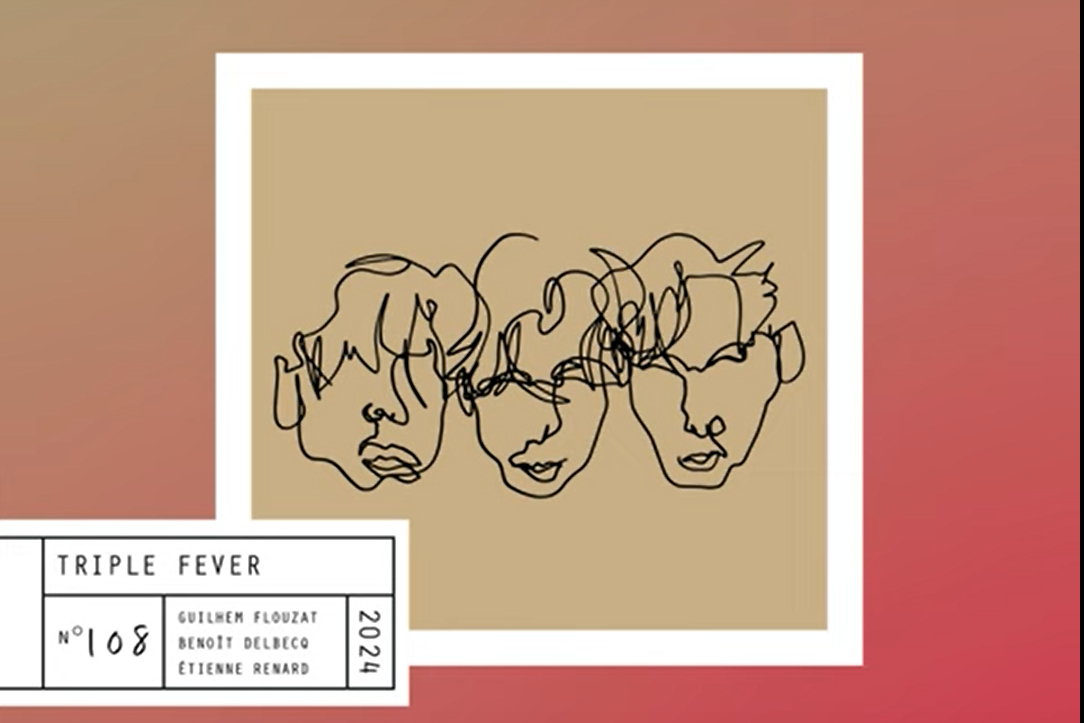Review: Tomas Fujiwara’s Triple Double’s ‘March’
|
Getting your Trinity Audio player ready...
|
The debut recording of Tomas Fujiwara’s Triple Double was extraordinary. The two-drum (Fujiwara and Gerald Cleaver), two-guitar (Mary Halvorson and Brandon Seabrook), and two-horn (Taylor Ho Bynum on cornet and Ralph Alessi on trumpet) structure of the band is something rarely seen. Even in the bold avant-garde scene that Fujiwara frequents. After the release of Triple Double (Firehouse 12, 2017), Fujiwara continued to impress as a bandleader in 7 Poets Trio (Rouge Art, 2019) and alongside some of his Triple Double bandmates in other contexts: Ho Bynum’s The Ambiguity Manifesto and Halvorson’s Code Girl. Even with the addition of these stellar recordings, the sprawling sway between fierce competition and ingenious interplay still made Triple Double arguably the finest moment of his career. Albums of the caliber of Triple Double can be hard to follow, but March (Firehouse 12, 2022) is the opposite of a sophomore slump.
On March, Fujiwara returns with the same band and handles the sequel in the best way possible. The singularity that made the debut so striking remains and is put through a blender in the form of a concept that strongly distinguishes March from its predecessor: march rhythms. Stern marches could constrain a band as exploratory as Triple Double, but that never gets close to happening on this record. The sextet continues to exhibit an awe-inspiring amount of freedom.
The opening track, “Pack Up, Coming For You”, makes it immediately clear that these are not your average marches. Halvorson and Fujiwara set the pace as Ho Bynum establishes a sharp theme and moves into skillfully measured improvisation. The combination of the guitar’s circular phrases and the steady kick of the drums creates an interestingly contorted march. As Ho Bynum’s playing becomes more abstract, Halvorson leaves her rhythmic post for loops and distortion, throwing the band into a furious tempest. All of this alone would be enough for a great song, but the beauty of Triple Double is that there are two trios. After the storm subsides, Alessi, Cleaver, and Seabrook give their take on the composition before both trios have an engrossing collision in the final stretch of the tune.
The notable difference between the trios is one of Triple Double’s many strengths. Cleaver takes the drumming into heavier territory in “Pack Up, Coming For You”, Seabrook has a distinctly barbed guitar style, and Alessi’s trumpet tone is much smoother and brighter than Ho Bynum’s cornet. Seabrook and Alessi play a key role in the opening minutes of the frenzied “Wave Shake and Angle Bounce.” The guitarist and trumpeter shift between complementing and challenging each other in a bout of thrilling angular improvisation. The energetic drumming and punchy motif of “Wave Shake and Angle Bounce” make it a hectic experience. The tune briefly moves into a more metered march structure, but only to set the stage for a superb Mary Halvorson solo before the band powers towards a colossal finish.
Unlike the restless “Wave Shake and Angle Bounce”, “The March of the Storm Before the Quiet of the Dance” begins sparsely. Staggered drum rolls, airy trumpet playing, and a warbly cornet create an ominous atmosphere. The pace eventually picks up when Halvorson introduces a jagged theme that Seabrook elaborates in an inventive solo that makes good use of both the rugged and icy qualities of his guitar playing. Lead guitar duties then switch to Halvorson, who puts on the rock distortion and lets loose. The guitarist shreds with a fascinating mix of top-notch jazz chops, loops, and spellbinding glitchy effects. She has a completely different role in “Life Only Gets More”, a trippy ballad that shows Fujiwara’s softer side. The bend of Halvorson’s delay pedal is well suited to the tune’s laidback melody, but even in a ballad Triple Double doesn’t let up completely. The drummers play as if they’ve been called up for a solo as Seabrook closes out the tune with a twangy rendition of the motif.
Fujiwara and Cleaver are both excellent throughout the album, but “For Alan, Pt. 2” is something else entirely – a drum duet. Triple Double’s eponymous debut had “For Alan”, which was 8 minutes. “For Alan Pt. 2” is more than twice its length and is somehow even better. Throughout the song’s 17 minutes, the drummers display an amazing sense of rhythm, dynamics, and communication. It’s a great way to end a sensational album. March further confirms that Tomas Fujiwara is a key musician and composer in the avant-garde jazz scene. This record is not to be missed by anyone looking for a healthy dose of adventure and creativity.
March will be available on March 4 on Firehouse 12 Records. It can be purchased on Bandcamp or in our Amazon Affiliate Store.
Tracklist: 1. Pack Up, Coming for You; 2. Life Only Gets More; 3. Wave Shake and Angle Bounce; 4. The March of the Storm Before the Quiet of the Dance; 5. Docile Fury Ballad; 6. Silhouettes in Smoke; 7. For Alan, Pt. 2.
Personnel: Tomas Fujiwara (drums), Gerald Cleaver (drums), Mary Halvorson (guitar), Brandon Seabrook (guitar), Ralph Alessi (trumpet), Taylor Ho Bynum (cornet).




One thought on “Review: Tomas Fujiwara’s Triple Double’s ‘March’”